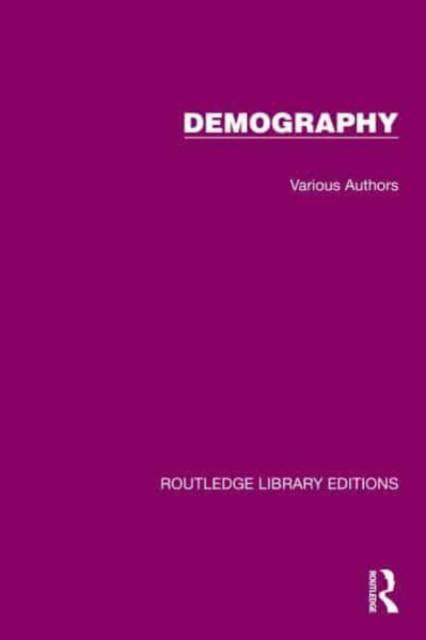
- Retrait gratuit dans votre magasin Club
- 7.000.000 titres dans notre catalogue
- Payer en toute sécurité
- Toujours un magasin près de chez vous
- Retrait gratuit dans votre magasin Club
- 7.000.0000 titres dans notre catalogue
- Payer en toute sécurité
- Toujours un magasin près de chez vous
Description
Demographic history is now recognised as one of the most important components of social and economic history. Although the empirical contexts of some of these volumes published between 1924 and 1995, (particularly those focussed on modelling and planning for population change) can at first seem out-of-date, the concerns discussed remain very much at the focus of public discourse. Indeed, they seem to have been given added urgency into the second quarter of the 21st Century as the world seeks to recover from the long-term economic and social, as well as demographic, consequences of the COVID pandemic and the global environmental crisis.
To explore the impacts of increasing human numbers on nature, many of the books examine the relationships between human population density and biodiversity change. Others discuss the causes and impacts of the considerable and widespread levels of population change, focussing on a broad spectrum of public and social infrastructure concerns, as well as economics.
Demographic methods (many of which are analysed in this collection) have been evolving ever since the birth of demography in response to changes in the field's research contents and theoretical orientations. The future development of demographic methods will likely continue to incorporate new methods first developed in other disciplines, but formal demographic techniques will still play a role in population forecasting, measurements improvements, and correction of faulty data, providing foundational knowledge for other social science disciplines.
The volumes are global in nature, containing research from all continents and by authors whose work on population mobility and land use laid the foundations for distinguished careers in areas as diverse as African studies and medical geography.
Spécifications
Parties prenantes
- Auteur(s) :
- Editeur:
Contenu
- Nombre de pages :
- 4668
- Langue:
- Anglais
- Collection :
Caractéristiques
- EAN:
- 9781032538198
- Date de parution :
- 02-10-23
- Format:
- Livre
- Dimensions :
- 138 mm x 216 mm
- Poids :
- 449 g

Les avis
Nous publions uniquement les avis qui respectent les conditions requises. Consultez nos conditions pour les avis.






